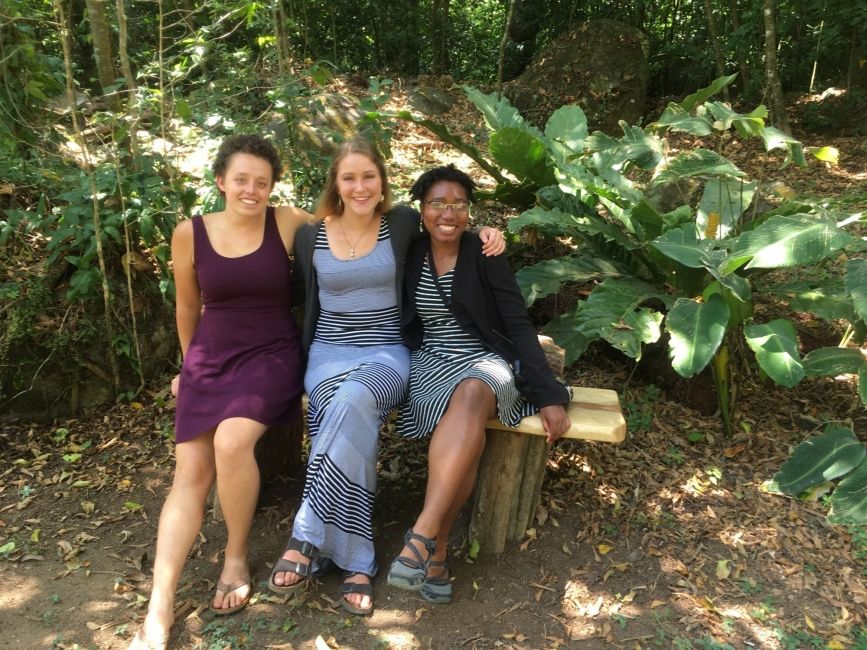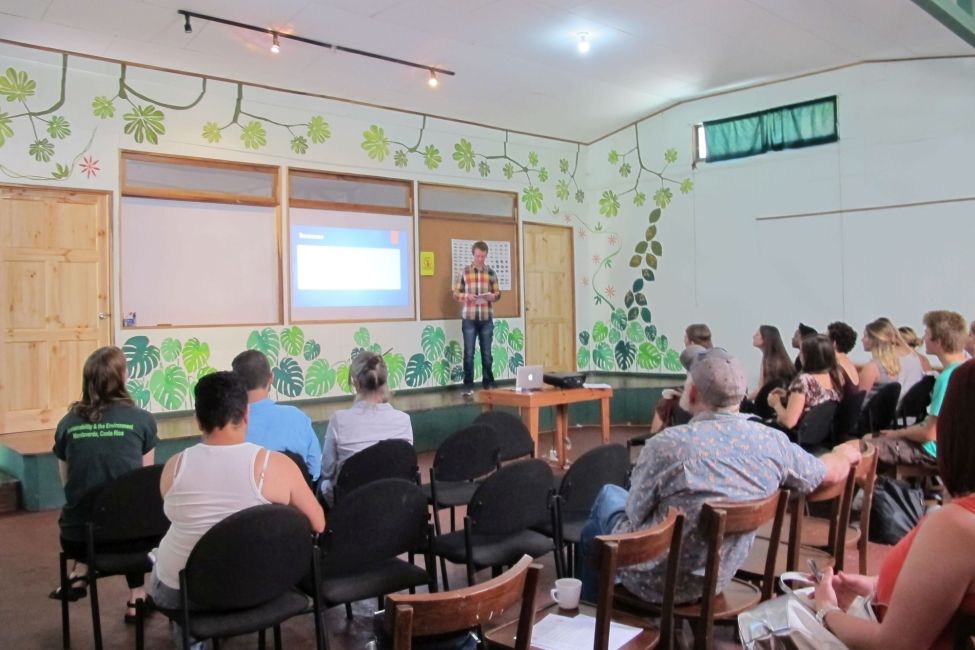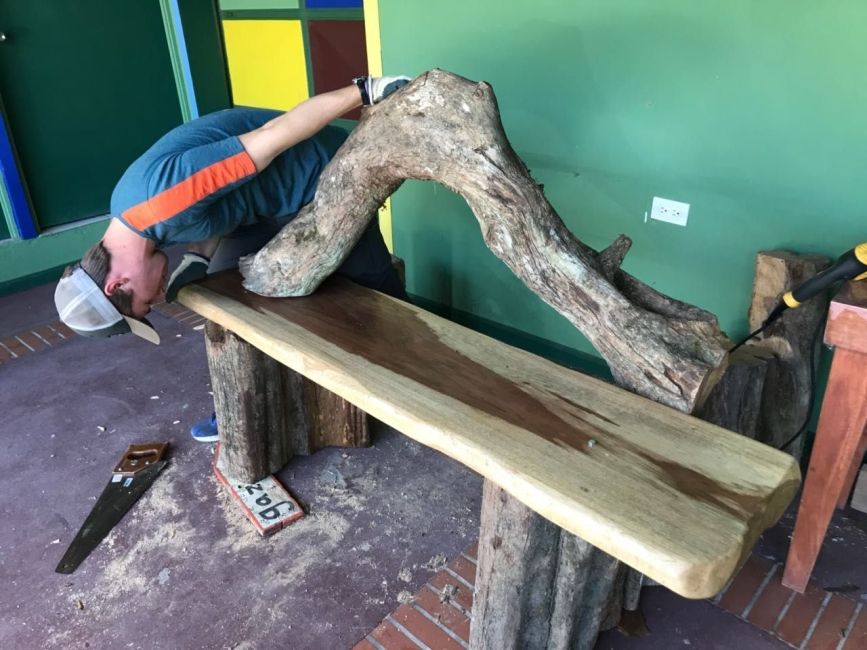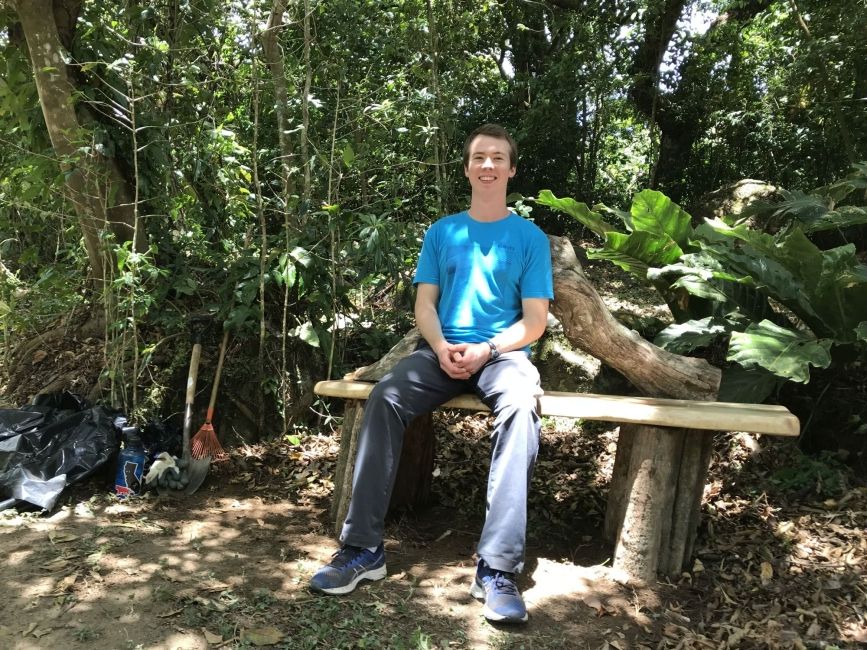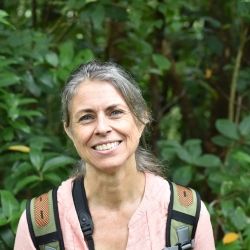"Sustainable Hardscaping," by Griffin Cronk (Whitman College): Sustainability and Environment Internship
As my electric drill churns a screw down through the top of a wooden bench, I am aware of the initial proposal and design work that makes this moment more than manual labor. The first period of the internship focused on learning principles of landscape and hardscape design from my supervisor, Felipe, who is known in Monteverde as an excellent landscape designer. The goal of the first week was to accumulate necessary background knowledge which meant understanding the context of the property on which our projects would be grounded. This required learning about sustainable design, the climatic differences in the greater Monteverde area and the social aspects of the property itself. Knowing all of this, I began to work.
My task was to design, construct, and install some sort of hardscaping feature in the garden of Casa de Arte—a local business that offers garden paths and sells wares made by artists in the community. Aware of my role as a visitor to this town, I actively avoided imposing my preconceived ideas about what gardens should contain by performing a site analysis to generate site-specific project ideas. One of the main ways that I felt I could address a problem we identified was creating seating areas for people to stop and enjoy the gardens. There were few places to sit and all the available benches were in disrepair. I went through the creative process with this need in mind—continuously seeking to incorporate features of sustainability into the project.
The sustainability justification of my project was a valuable step that could easily be part of all building and landscaping design processes. I believe that in our current era of development, it is crucial that buildings and their landscaping be composed of sustainably sourced materials. I hoped to get a sense of what it looks like to consciously choose inputs. Some of the components of my sustainability objectives were to 1) rescue materials, 2) use as few materials as possible, 3) and design with the intention to increase the social interactions of a community space. Strengthening social ties can increase accountability and decrease exploitation of the environment. I began by finding materials that had been abandoned along the sides of the roads. I used what I found to develop my designs. Most of the materials were logs and stumps that had been cut down and had been left to rot. However, I saw opportunities for these logs to be benches for 5-10 years before they rot and return to the soil and the nutrient cycle.
Through the course of my internship, I learned about the practical constraints and delights of working only with materials and methods that I determined to be sustainable. I had to be critical in my decision making each step of the way. This taught me to be flexible with my design plan and to frequently step back to consider the implications of each decision. In the end, I created one small seat and two benches. I hope that the benches will become well-used spots to rest and enjoy the natural garden and forest. As I sat to inaugurate one of my benches, a blue morpho butterfly fluttered towards me—validating the hours of sawing and drilling.
Related Posts
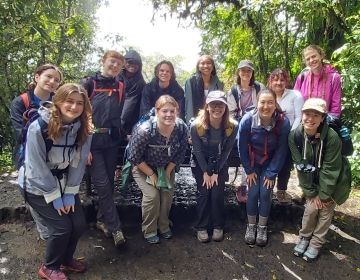
Happy Earth Day: Today and Every Day
Happy Earth Day! Every April 22, this global event comes around to remind us how precious our planet is, what sustainable efforts we can make to protect Earth, and that... keep reading

Costa Rica vs. Argentina: Which is Better for Study Abroad?
Imagine yourself sipping mate in a bustling Buenos Aires café or lounging peacefully in a hammock overlooking Costa Rica's lush rainforests. These contrasting scenes represent just a glimpse of the... keep reading

Top 10 Study Abroad Volunteer Opportunities with CIEE
Have you ever wondered if you could volunteer abroad? Perhaps you're looking into study abroad programs that provide international volunteer opportunities. If you’re itching to study abroad and truly make... keep reading
